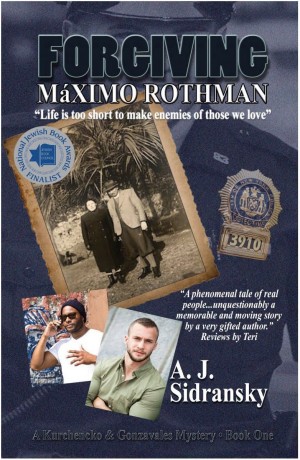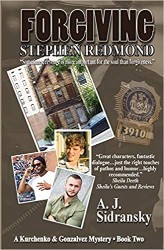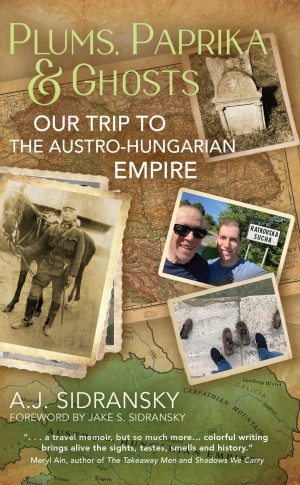
Celebrate Jewish Book Month with #30days30authors! JBC invited an author to share thoughts on #JewLit for each day of Jewish Book Month. Watch, read, enjoy, and discover!
Today, A.J. Sidransky, author of Forgiving Maximo Rothman, Stealing a Summer’s Afternoon and Forgiving Mariela Camacho, on reading and writing Jewish.
I have been an avid reader all my life. While I read the YA standards of the mid-twentieth century as a pre-teen, it wasn’t until we moved from Rosedale, Queens, to Trumbull, Connecticut in 1970 at age 14, that Jewish literature became the focus of the pile of books on my night table.
The move from heavily Jewish Rosedale to Trumbull, a town more like Mayfield in Leave it to Beaver, was my first real experience living as a member of a minority. Of course, not all our neighbors in Rosedale were Jewish, but in Trumbull, none of them were. I rarely saw others who looked like me, sounded like me or celebrated my holidays and traditions. Jewish books, Jewish literature, whatever label you want to use, was my lifeline to my identity.
Many of the books I read have stayed with me. Non-fiction works like Jews, God & History by Max Dimont, World of Our Fathers by Irving Howe, My People and My Country by Abba Eban. Fiction such as The Settlers by Meyer Levin, The Chosen by Chaim Potok, anything by Philip Roth or Isaac Bashevis Singer. Two authors stand out though, one from those early, teenage years and the other from adulthood. Both have had a significant influence on my own work, Leon Uris and Jonathan Safran Foer.
Uris’ Exodus was by far my favorite book growing up. Historical fiction written for a contemporary, paperback, genre reader, Uris’ work transported me through time and space, to Palestine fighting for a Jewish state, to the Warsaw ghetto fighting Nazis, to Czarist Russia escaping a pogrom and walking all the way to Palestine.
I knew these characters. Their stories were the stories of my family, my people, and they anchored me in a world where Christmas was at the center of the calendar, and the label Jew still held stigma. There were country clubs we couldn’t belong to, colleges we couldn’t attend and careers for which we had to anglicize our names. That was white-picket-fence America in the 1970’s. A place where Jews tried to blend in by not being too obvious about their heritage, culture or beliefs.
As a writer, what affected me most was Uris’ story structure. He would intertwine two, three, even four stories into one unified whole. The back stories of each major character informed the reader of the character’s actions and motivations in the novel’s present. Uris not only inspired me to write about Jewish subjects, themes and personal conflicts, but guided me in creating the structure for my own novels. The multiple story lines in my debut novel, Forgiving Maximo Rothman, and its companion piece, Forgiving Mariela Camacho, reflect his influence.
Foer, who came to prominence in my adulthood is a very different kind of writer than Uris. He’s literary and more introspective. His books, particularly Everything Is Illuminated, reflect the influence of magical realism. What I learned from Everything is Illuminated, and admittedly from interviews done with Foer, is to peel back the layers of a story and to see clearly what lay beneath. That method of delving deeper and deeper, of seeking emotional truth rather than accepting a story as told, leads me to peel back the layers of my stories rather than reveal them as absolute truth.
No writer exists in a vacuum. We learn to write by reading. We learn to tell stories by experiencing the story-telling of others.
A.J. Sidransky writes about ordinary people faced with extraordinary circumstances. His most recent novel, Incident at San Miguel, won four independent press awards for historical fiction. Plums, Paprika & Ghosts, is his first foray into non-fiction. A very personal memoir, it introduces Sidransky, his family and his history, the basis for much of his work to his readers.



